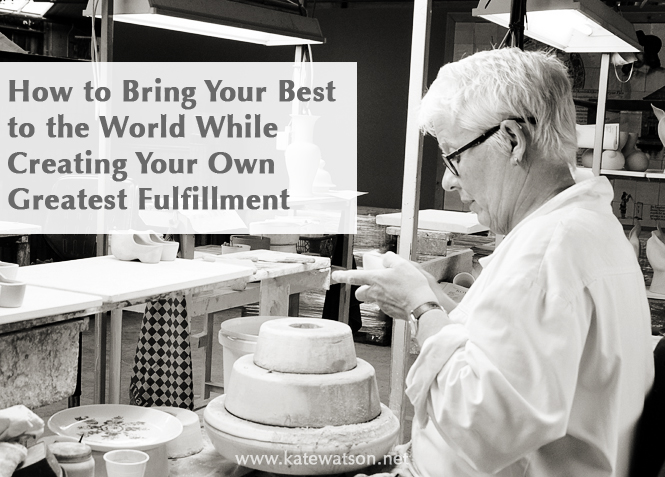
Last week’s post on exploring your interests and passions began to hint at why I‘ve been writing the getting to know yourself series. This week, I’ll make it more clear.
In and of itself, getting to know yourself is important. As I wrote in that first series post, “Your relationship to yourself will be the longest and most significant of your lifetime.” But, there’s another piece to this, and that is taking responsibility for yourself, owning your decisions, and creating the life you dream of, that is, making your life yours.
I know the desire to go with the flow, to accept other people’s opinions or allow them to make choices for you. It can seem easier to drift through life and allow things to happen to you instead of deciding what matters most and making the appropriate choices to bring that into being. But, to live your best life, you need to make those choices yourself.
To that end, this week’s topic is identifying and honing your talents. Now that you’ve uncovered so much of what makes you you—your belief systems, values and motivations, interests and passions—it’s time to figure out how you want to bring value into the world. And while you’re doing this, remember to honor your personality. It’s the only way to do this your way.
Let’s talk about talents. I could use many words to describe what I’m talking about here; your talents could also be called your gifts, your strengths, or your innate abilities. They are tangible and transferable, things you can give to or trade with someone else to create or exchange value. They are also broad and can be applied in many ways, in many professions, on many life paths.
Identifying Your Talents
Before we can hone our talents, we must first figure out what they are. Your talents are your innate gifts, they’re those things that create a sense of flow when you’re doing them. They’re the things you enjoy and for which you have an affinity.
When you look for your talents, you’re not looking for something you’re necessarily skilled at (yet!), but instead something you feel deeply engaged in when you do it.
Often, because our gifts are so close to us, so deeply ingrained in who we are, we can have trouble seeing them for what they are. You may assume that everyone is as good at negotiating as you are. Or you may think, because you’re a natural organizer, that organizing is so easy anyone can do it. Neither of those is true.
We each have unique talents and honoring and honing them is what leads us to developing a productive, happy, fulfilled career and life. So, how do you uncover your talents?
Self-Guided Talents Exercise: One way to tease out your talents is to create a list all of the things you’ve loved doing before. Consider volunteer and paid jobs, hobbies, and things you do willingly to help out at home or in your family.
You might want to start by writing down all of the roles you’ve held (student, teacher, manager, daughter, entrepreneur) and then spend a few minutes thinking through each one and writing down what skills you enjoyed using in each role.
Initially you may write down something like playing pool or dancing or writing essays. When you do, look at the larger picture, the transferrable skills behind each talent.
What makes you good at playing pool? Spatial relations abilities.
Dancing? Kinesthetic ability.
Writing essays? Linguistic or communications talents.
The things we’re good at that seem small and irrelevant can often be translated into broader themes that are translatable to a lot of different professions or societal contributions. Someone with spatial relations abilities could design a new bridge or make beautiful art. Someone kinesthetically gifted could be a welder, performer, or yoga instructor. Linguistic or communications skills could translate into careers involving writing, translation, or advocacy.
There are also several assessments you can use to tease out your talents.
Multiple Intelligences Test: In 1983, Harvard professor Dr. Howard Gardner proposed a theory of multiple intelligences. From his research, Dr. Gardener found that each of our brains develops differently and that some parts may develop more fully than others.
He suggested there are eight forms of intelligence, including verbal/linguistic, math/logical, spatial, musical, kinesthetic (physical ability), interpersonal (relating well to others), intrapersonal (self-understanding), and naturalist. To explore your various intelligences, take this free assessment.
StrengthsFinder: Developed by psychologist Donald O. Clifton and The Gallup Organization, StrengthsFinder measures the present of 34 talent themes, your innate patterns of thought, feeling, or behavior that can be applied productively. For more information or to take a paid version of the test, visit http://www.strengthstest.com.
VIA Character Survey: Developed under the direction of Dr. Martin Seligman, the “father of positive psychology,” the VIA survey measures 24 individual character strengths. You can take the free, scientifically validated assessment here.
Honing Your Talents
Once you’ve figured out which talents you’re naturally inclined toward and enjoy using, keep developing them. If you love learning new things, read, take classes, and never stop learning. If you’re a people person, spend as much time as possible around others, figuring out how to bring light to both their and your lives. If you’re a naturalist type, spend time in nature, learning about flora and fauna, and figuring out how to preserve our natural habitat.
Doing so is the only way you can bring your very best to the world. In the process, you’ll be taking responsibility for your life and bringing about your own greatest fulfillment.
As Abraham Maslow said, “A musician must make music, an artist must paint, a poet must write, if he is to be ultimately at peace with himself. What a man can be, he must be. He must be true to his own nature. This need we may call self-actualization.” Go forth and be self-actualized.
Cheers,

For part nine in the getting to know yourself series, click here.

This is week seven in the getting to know yourself series. This week, we’re going to talk about getting to know ourselves through exploring our interests and passions.
A little less than a year ago, I wrote about passion and purpose after asking some friends to tell me what their passions were and discovering that some of them felt they were still figuring that out.
Let’s take some of the pressure off needing to know right now and instead focus on what passion means. Passion is “a strong feeling of enthusiasm or excitement for something or about doing something.” Interest, passion’s more reserved cousin, is “a feeling of wanting to learn more about something or to be involved in something.”
Your interests and passions can help point the way to discovering who you are and who you want to be. So how do you uncover them? Well, by examining what you like to learn about and how you like to spend your time, of course. Here are a couple of ways to do that:
Explore Your Surroundings
Grab a small notebook and pen, or a voice recorder, and walk to your front door. Then, walk right out the door and stroll down to the street, turn around, and look back at your home. Imagine this is your first visit and you know nothing about who lives here. Now take notes on what you find.
What style is the home? What do its surroundings tell you about what the person who lives here values?
As you walk inside, take note of the furnishings, art, and colors used. Is there somewhere that seems to be the central hub of the home? What does that say about the person or people living there?
Is there an area you particularly love in this space? Where is it and why does it inspire you? Do you see a lot of personal touches, or is everything very clean and modern? Is the wall art homemade or professional?
What kind of books or magazines are there? What do they tell you about the interests of the inhabitants? Do you see any collections? Is someone collecting vintage letter openers, or perfume bottles, or beer caps? What kind of person lives here?
Write down or record whatever you find as reminders of what your interests and passions are. If, as you’re walking around, you don’t see much of yourself in this space, ask yourself why that is. Look for any hints you can find regarding your interests and passions.
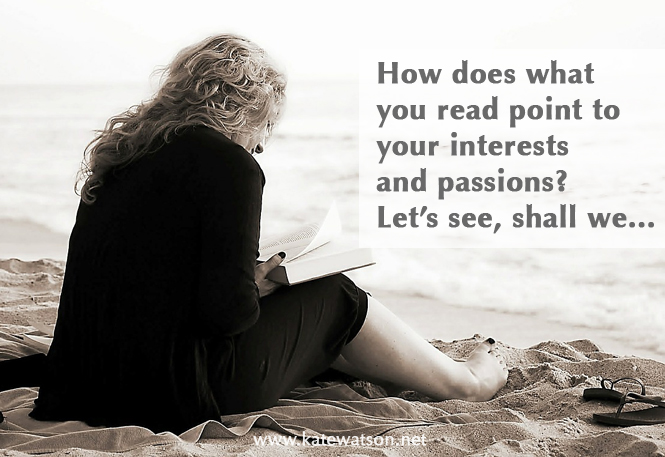
Journal
We talked before about journaling as an essential tool to get to know yourself. Once you’ve taken an inventory of your home to rediscover your interests and passions, you might want to journal a bit about your discoveries.
If you had trouble with the exercise or would like to explore your interests and passions further, here are some journaling prompts:
- Describe your ideal day. How would you spend it? With whom? What does your ideal day say about your interests and passions?
- Which areas of the bookstore do you always visit? What do those areas suggest about your interests and passions?
- List your five favorite films. Are there any commonalities? What would they they say about your interests and passions?
- What are your causes? What social issues could you spend all night discussing, or what volunteer organizations do you love to support? How do these causes point to your interests and passions?
- What hobbies do you most enjoy now or have you enjoyed in the past? What do they suggest about your interests and passions?
Now that you’ve discovered (or rediscovered) your interests and passions, you might be wondering why I asked you to do this. The answer: To help you make better decisions about how and where to spend your time based on what will bring you the most happiness. It’s really that simple.
Getting to know yourself is about learning to honor the truth of who you are, and your interests and passions are one part of that.
Cheers,

For part eight in the getting to know yourself series, click here.

July has been a good month. It became an all-month-long birthday celebration when presents started arriving right after the 4th, and has continued with quality time spent with most of my local friends, a visit from one of my favorite L.A. families, and a fabulous birthday hooky date with my love.
It’s also been one year since I published my 40 before 40 list and six months since my first roundup so it’s time for another update. There’s been some solid progress on the list over the last six months. I also started working toward many more items than are listed below, but here’s what I can report thus far:
#1. Try Peruvian food
I tried lomo saltado (below) and anticuchos (beef heart) in February, snapping this pic for Instagram to prove it. Delicioso!

#4. Wear my joy
I’ve been wanting to wear my joy, as inspired by artist Kelly Rae Roberts, for a while now, but I didn’t really know how. Luckily, KRR came to the rescue by offering the Wear Your Joy e-course in May.
I signed up and, while I’m still working through the course at my own pace, I feel like I’m gaining an increasing sense of my personal style. More to come.
#6. Play tourist in my home city
This one is an interesting challenge. It doesn’t have a clear end, a time when I can check it off and say “Yes, I did it!” It’s more of an attitudinal shift from status quo living to exploring our surroundings more deliberately.
To that end, I made a list of things I want to do around the Bay Area over the next few months, which includes visiting Safari West, walking across the Golden Gate Bridge, and attending Kings Mountain Art Fair in September.
The first check mark was ticked when Mr. Watson played hooky for my birthday and drove us to Santa Rosa and Safari West, a 400-acre preserve featuring giraffes, antelopes, rhinos, zebras, and other African wildlife. We went on a three-hour guided tour and had dinner in their open-air restaurant afterward. I even took along my “real camera,” a Canon 5D with 70-200mm lens, for snapshots.

#13. Attend Holi at Stanford
Brian and I attended Asha Holi in April. We danced, threw colors at each other and random strangers, ate some tasty Indian food, and chilled on the grass.
 Photo courtesy of Snap Yourself And, in case you’re wondering, all of the color washed right off when we hopped in the shower afterward. Our old tees got a few stains, but it was worth it—we had dressed appropriately.
#14. Celebrate 10 years of marriage
Mr. Watson and I celebrated our 10th wedding anniversary with a photo shoot and marriage blessing in Hawaii on May 28th. It was a beautiful day at one of our favorite beaches on the Big Island.
Paul Simon’s song lyrics, “Ten years come and gone so fast. I might as well have been dreaming,” is dead accurate, in my opinion. I can’t believe we’ve been married 10 years but it’s been a blast and I’m looking forward to our next chapter.
Here are a few of my favorite photos, from photographer James Rubio:

#15. Dance in the rain
On one of our last evenings in Hawaii, Brian and I danced on our deck overlooking Kamuela and Waikoloa to “Anthem” by Emancipator. It was drizzling. That counts, right?

There you have it: Roundup #2 of my 40 Before 40 List. More in January with the third installment.
Cheers,


This week, we are continuing the getting to know yourself series with an overview of core values and motivations. For me, these topics are closely aligned because your values are what motivate you to do certain things or think in a particular way.
How do the two relate? Values are nouns, descriptors of what matters to you, things like family, achievement, strength, or abundance. Motivations are verbs; they’re what drive you such as to make a difference, leave a legacy, earn a lot of money, or parent abandoned children.
How to Identify Your Core Values
I shared an exercise to identify your values just over a year ago. If you haven’t completed that exercise, you might want to do so now. Or you can try this:
Make a list of 5-10 people who inspire you. Consider your past and present, friends and family members, historical figures or world leaders, fictional characters, etc. Next to each name, write down the character qualities that you associate with that person. Circle any qualities that you list more than once. These are a good place to start looking for your values.
As you tease out your values, you may notice there are differences between what you value personally vs. professionally; thus, you might want to create two lists.
How to Identify Your Key Motivations
One of the central ways to differentiate types of motivations is whether they are intrinsic or extrinsic. Intrinsic motivation comes from within, and is characterized by an interest or enjoyment in something for itself.
Extrinsic motivation comes from external sources and can either be positive or negative, the quintessential carrot vs. stick. Extrinsic motivation could include praise, awards, or gifts on the positive side, or coercion, threats, or punishment on the negative.
Intrinsic motivation is significantly more powerful than extrinsic motivation. The major problems with extrinsic motivation, in case you were wondering, are that it results in diminishing returns over time (you need more of it to accomplish the same result); if it’s withdrawn, motivation disappears; and it can reduce or remove someone’s innate desire to do something (their intrinsic motivation). Naturally, when I’m talking about identifying your motivations to get to know yourself, I’m focused on your intrinsic motivators.
As you begin to think about your values and motivations, you might want to first look back at prior topics we’ve covered, specifically understanding your past and uncovering your key beliefs. Not to dwell on the subject but our pasts often shape how we think about the world and what we most value.
To tease out your motivations, try the following exercise:
Make a list of 5-10 things you’ve always loved to do. These can be short and sweet, like travel, read biographies, or volunteer with children. Now, look at your list, pick one item and ask, “What does that do for me?” Keep asking the same question until you get to a core motivation. Hint: You’ve reached a core motivation when the answer to the question, “What does that do for me?” is the same as your last answer. As with values, you’ll probably have several key motivations.
Abraham Maslow, founder of humanistic psychology, postulated that human beings have a common set of needs—physiological, safety, belonging, and esteem needs—that must be met before we can pursue needs that relate to our self-actualization, such as creativity, morality, spontaneity, and removing prejudices. In completing your motivation exercise, you may find that your key motivations fall anywhere on Maslow’s hierarchy. This is completely reasonable and to be expected.
For example, my #1 personal value is belonging and connection, which could also be stated as having a key motivation to belong. It’s no secret why, either: As a child of divorce who felt like she never quite fit in with her peers, it became important for me to feel like I’m part of something bigger than myself, like I’m not alone. My childhood wounds will probably always impact me, as they do all of us, but it’s what I choose to do with them that really matters. That’s where values and motivation come in.
By identifying and claiming your core values and motivations, you will be better able to make important life and career decisions, connect with like-minded people who can understand and support your goals, and stay on track with what matters most to you.
Cheers,

For part seven of the getting to know yourself series, click here.
 I’ve read several articles that call the Myers Briggs Type Indicator (MBTI) useless or meaningless and yet, not only is it the most popular personality assessment worldwide, I believe there are many reasons to appreciate personality assessments if you’re using them correctly. I’ve read several articles that call the Myers Briggs Type Indicator (MBTI) useless or meaningless and yet, not only is it the most popular personality assessment worldwide, I believe there are many reasons to appreciate personality assessments if you’re using them correctly.
But, first, why the haters?
Myers Briggs Type Indicator and Jung Typology Theorem: Complaints
It has no predictive power
University of Pennsylvania organizational psychologist Adam Grant says, “The characteristics measured by the test have almost no predictive power on how happy you’ll be in a situation, how you’ll perform at your job, or how happy you’ll be in your marriage.”
Whoa there, who said anything about predictive power? CPP, publisher of the Myers Briggs Type Indicator, states that the test helps people “gain insights about themselves and how they interact with others—and improve how they communicate, learn, and work.”
In fact, if you drill down into CPP’s website a bit, you’ll find that “[the test] is not, and was never intended to be predictive, and should never be used for hiring, screening or to dictate life decisions.” Ok, so it has no predictive power. Glad we got that straight.
It is based on type theory versus trait theory
Type theory states that people fit into a category, either right-brained or left-brained, for example. Of course this is not accurate in itself. But if you look at right-brained and left-brained as either side of a continuum, it makes sense that people fit somewhere along that continuum.
Further, it tracks that many people lean toward one end of the spectrum. Type theory simply classifies you according to the side of the spectrum you’re nearer. Trait theory makes more clear that you are on a continuum, but with very similar end results. I would argue that, for laypeople, this is pure semantics.
Test results can be inconsistent
A 1979 study titled “Test-Retest Reliabilities of the Myers-Briggs Type Indicator as a Function of Mood Changes” found that up to 50% of test takers would be reclassified upon re-taking the test.
Because the assessment utilizes self-reported data, I’m not at all surprised the results are inconsistent. After all, they depend on test takers to tell the truth, to be adequately introspective to answer accurately, and to not ascribe any personal bias to one trait over another.
As far as consistency of results go, I can only tell you my anecdotal experience. I’ve taken the official MBTI once and online variations of it literally dozens of times and my type has always been INTJ, with one exception. I tested as an INTP the first time I took the test and I remember consciously choosing responses that I thought would make my then-Type A personality seem more relaxed and approachable because I was being tested for work. Upon reading the descriptions for INTJ and INTP, though, it was clear that INTJ better reflected how I think about myself.
Having your results change doesn’t mean the assessment is wrong; it could mean that you changed your answers to game the system as I did or that you prefer answering the questions according to how you feel in the moment versus long term.
Myers Briggs Type Indicator and Jung Typology Theorem: Strength
Now that we’ve gotten through the naysaying, why do I like the Myers Briggs and similar personality assessments? For exactly the reasons they’re purported to be useful: Because they can help people “gain insights about themselves and how they interact with others.” Because they help us understand who we are and why we act the way we do as well as how to relate to others who react differently.
When I read my assessment findings, I always have aha! moments.
Often our personality traits are so ingrained that we have trouble seeing them and, even when we do see them, we have trouble putting words to them. Personality assessments are, first and foremost, a tool to help us better understand ourselves. And I think we all need more self-awareness and understanding in this world.
When I look at results for other family members, I find that I am better able to understand them as well. Not to assign them to a job or task or to predict how they’ll react in a given situation, just to understand. Understanding underlies the creation of community, family, and global acceptance.
Bottom Line
Should anyone use the Myers Briggs Type Indicator to select the “best candidate” for a job or to decide upon promotions or job assignments? Heck no, that’s ridiculous.
Does being designated as one type mean you have no traits of its opposite? Again, no. No one is purely an introvert or extrovert. Think of each trait as a range; your “type” is the trait that is more dominant for you. It’s also possible that you’re so close to the middle that you’re what I call a “star” (or asterisk, meaning you have no marked preference for either characteristic).
So, look at your results with an open, inquisitive mind, absorb what makes sense to you, and let go of what doesn’t. You’ll be a better person for it.
Cheers,

|












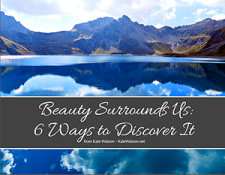
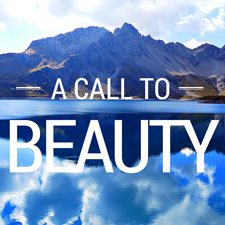
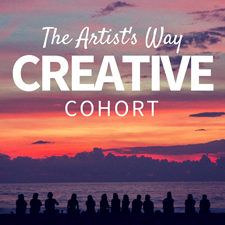







Exploring Your Interests and Passions » KateWatson.net - […] For part eight in the getting to know yourself series, click here. […]